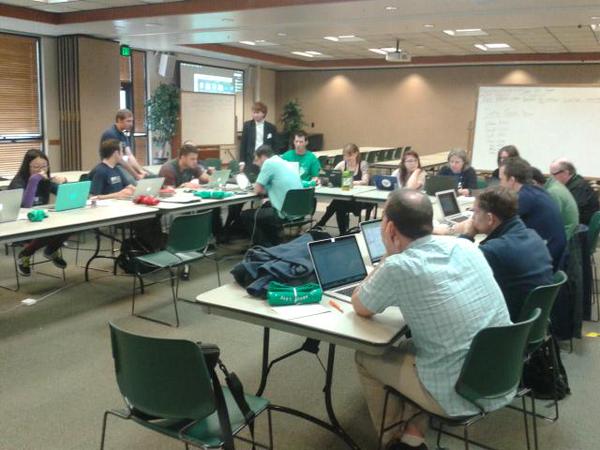OREM — Last week I participated in the Utah Data Dive, a two-day event where students from Utah Valley University, Brigham Young University, and Utah State University met to analyze data for non-profit organizations. The goals were to give students the experience analyzing data that they would need to land jobs after graduation and to help non-profits understand their data well enough to use it to improve their operations.

What does this have to do with theatre?
One of the organizations that we were analyzing data for was the Springville Museum of Art. That got me thinking about other arts organizations, like theatre companies, and how they could use data to grow their audiences, become more efficient, and better serve the needs of their constituents.
Now, I know that every theatre company in the state is collecting data at some level: most companies I talk to know how many tickets they have sold to their most recent production, the box office grosses, etc. What I’m talking about is more in-depth analysis, some of which can be answered from the numbers that companies have on hand easily. Here are some examples:
- How far do people travel to see your companies’ productions? Analyzing ZIP code information can give you a good estimate. If your audience is extremely local, is it because you haven’t tried reaching out to other markets, or because people are not willing to travel far for your shows?
- What demographic groups do your audiences belong to? On Broadway ticket buyers fall into four groups that are about equal proportions of the Broadway audience: New York City residents, domestic tourists, residents from within a day’s drive of Manhattan, and foreign tourists. Marketing agents advertise a show accordingly to target these audience groups. Who are your companies’ audience members? Are they families? College students? Professionals?
- The previous question asks about who attends productions. Sometimes that’s a very different group from the people who attend. Nationwide, most ticket purchasers are female—and I suspect the same is true in Utah. This can help target marketing even further: basically, are you marketing to Mom, the Wife, or a Partner?
- How long in advance do people purchase tickets? Does your audience buy tickets when a show is first announced, or do most purchases come within 48 hours of curtain? This can help companies project audience sizes and box office grosses. It can also help retool marketing and pricing decisions to encourage audience members to buy tickets earlier.
- What percentage of first-time audience members come back within a year of attending a show at your theatre company? If the number is low, why are people not coming back? What type of shows attract first-time patrons to your company? What type of shows get people to come back?
- On Broadway The Lion King is the top grossing show because Disney uses a computer program to price individual seats for each performance at a point that maximizes profits. (They borrowed this idea from the airlines.) This requires sophisticated—but not expensive—analysis of years of data about every seat and every performance for a company. That’s more data than most companies have, but the Utah Shakespeare Festival, some of the universities, and Pioneer Theatre Company could likely do this sort of analysis.
Other questions would require theatre companies to cooperate and pool their data together. Perhaps one day there will be a Utah Arts Data Depository where groups can combine their data and expertise for everyone’s benefit. If theatre companies join forces they could answer questions like these:
- What percentage of patrons at your theatre company are also patrons at nearby companies? For example, what percentage of Plan-B Theatre Company patrons have attended a show at Pioneer Theatre Company or Salt Lake Acting Company within the past year? How many SLAC patrons have attended a Plan-B show recently? I doubt anyone really knows.
- Does having a show play at the same time as a nearby company’s fragment the audience? Do companies sell more tickets if their shows don’t overlap? Would it help companies if they staggered opening nights, or can certain companies ignore one another, knowing that they are competing for different segments of the theatre audience in Utah?
- How do different companies’ attendance figures compare when they produce the same production? In other words, if producing Les Misérables gives one company a 20% boost in ticket sales, can your company expect the same?
Further possibilities develop when theatre companies combine their data with data from non-theatre sources:
- Does the weather impact attendance at your play? What about performances that are at the same time as big events, like a football game?
- Does social media buzz about performances generate ticket sales later?
- Online data can be used to gauge the popularity of certain plays. Does choosing a more popular play translate into more ticket sales for your company?
This is just a taste of the sorts of questions that data analysis can answer for theatre companies. Some of these questions are not easily answered. They may require some time, statistical savviness, or cooperation across organizations. But without analyzing data, the answers to these questions—and many others—are merely educated guesses.
